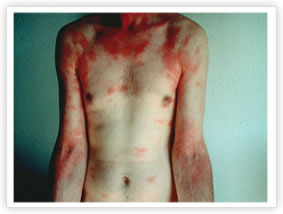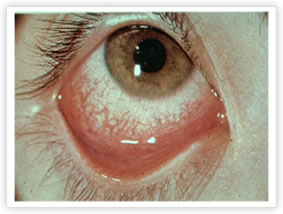

 |
Oak Processionary MothHealth RisksRisks ToSkin – causing irritating rash. Eyes – irritation and reddening of eyes. Upper respiratory tract – causing sore throats and occasionally breathing difficulty Symptoms include vomiting, dizziness, fever, constant itching and general malaise. It is a danger to humans, pets and livestock (particularly dogs and horses who tend to sniff or chew grass around the base of trees where toxic hairs have fallen). Health Issues OPMEach caterpillar or larvae has approximately 700,000 toxic hairs from L4 stage (see life-cycle section). The urticating (stinging) hairs remain active over a period of five to seven years. The urticating hairs and the shed skins can stay in a tree for years. The urticating hairs spread by wind and tree or branch removal work How Health Problems AriseProblems arise through direct contact with nests or larvae and through indirect contact with urticating (stinging) hairs in the air. From May through to July the urticating hairs swarm in the air in the areas around the larvae. From May until August the urticating hairs drift in the wind from the nests. They can spread quite a distance over a short period as they become airborne. The hairs are invisible to the human eye. They will get caught on skin and on any fabric and become very difficult to wash off. Therefore they will stay on clothing, canvass and laundry left on washing lines to dry. Risk GroupsTree workers and inspectors are at risk all year round from contact with old nests. Others who climb trees or sit at the base of the trees between May and August (when hairs fall to the ground) are also at high risk. All those who use public outdoor spaces near to where trees are infected are at risk, including joggers, sportspeople, hikers and ramblers, dog walkers and so on. Pets, especially dogs and horses are also at risk. How it could affect Public lifestyleOPM is relatively new to this country and outbreaks have not reached epidemic proportions. However in parts of Europe, where OPM is a major problem, communities have been severely disrupted. Based on what has happened elsewhere it’s possible that parks and play areas will need to be closed, sporting and community events cancelled and pet owners advised to keep their pets on leads or indoors. Children may be advised to stay indoors and it may be necessary to keep doors and windows shut during the summer months. We need to do all we can to contain the spread and minimise the disruption to day to day life and that is why it is essential that any outbreak is detected at the earliest possible stage. |
 |
   |
 |